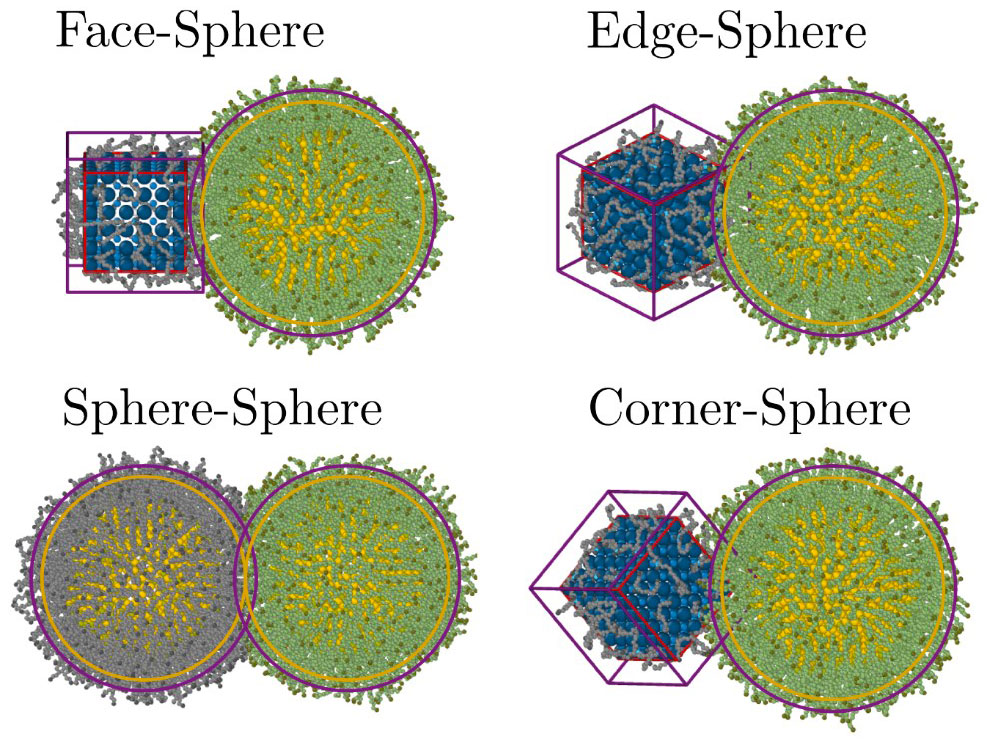
First discovered in Russia’s Ural Mountains in 1839, perovskites are minerals that scientists have long recognized for their potential around stability and efficiency in materials design. In terms of nanoscience and nanoparticles, perovskites may be able to literally change the world by enabling researchers to develop these materials with traits that seem to outshine those of today’s common materials.
In a recent study conducted using the Expanse supercomputer at the San Diego Supercomputer Center at UC San Diego, a team of scientists from the Ames National Laboratory at Iowa State University and the Swiss Federal Institute of Technology in Zürich, Switzerland, examined how to assemble perovskites that are shaped as nanocubes with other sphere-shaped nanocrystals.
Their research paper entitled Ligand Effects in Assembly of Cubic and Spherical Nanocrystals: Applications to Packing of Perovskite Nanocubes offers information about their study and the problems they observed when pairing the perovskites with spherical nanocrystals.
According to the scientists, an exciting aspect of their work was that it demonstrated the detailed verification of the Orbifold Topological Model (OTM) – a model developed in the group of Alex Travesset, a physicist at Iowa State and co-author of the paper, to predict the structure of nanoparticle arrangements.


These videos illustrate cube-sphere simulation at equilibrium distance. While the video on the left shows them equilibrating (in the first couple of frames they are a bit further apart and their ligands aren’t quite thermalized), the video on the right shows them after they are already equilibrated (the sphere has a nice spherical shell of ligands). Credit: Jonas Hallstrom
“The technical aspects that were necessary to accurately perform the Expanse simulations were considerable,” said Travesset. “I was very impressed with the work of our undergraduate colleague Jonas Hallstrom, as the work really exceeds the expectations of a physics undergraduate. He performed a superb job – and I am very excited to see where his career goes, given what he has already accomplished so far.”
Advancing our ability to assemble nanoparticles, and perovskites in particular, is a necessary and important step towards accelerating this process of materials discovery – and SDSC resources make this research possible.
Alex Travesset, co-author and professor in the Department of Physics and Astronomy at Iowa State University and associate scientist at Ames Lab
You can read more about this story here (published April 25, 2023): San Diego Supercomputer Center’s Expanse Used for Innovative Perovskite Study
Project Details
Institution: SDSC (San Diego Supercomputer Center), Swiss Federal Institute of Technology in Zürich
University: Iowa State University, UC San Diego
Funding Agency: This research was supported by the U.S. Department of Energy (U.S. DOE), Office of Basic Energy Sciences, Division of Materials Sciences and Engineering. Computational work used the National Science Foundation (NSF) Extreme Science and Engineering Discovery Environment.
Allocation Number: TG-MCB140071
The science story featured here, allocated through August 31, 2022, was enabled through Extreme Science and Engineering Discovery Environment (XSEDE) and supported by National Science Foundation grant number #1548562. Projects allocated September 1, 2022 and beyond are enabled by the ACCESS program, which is supported by National Science Foundation grants #2138259, #2138286, #2138307, #2137603, and #2138296.


